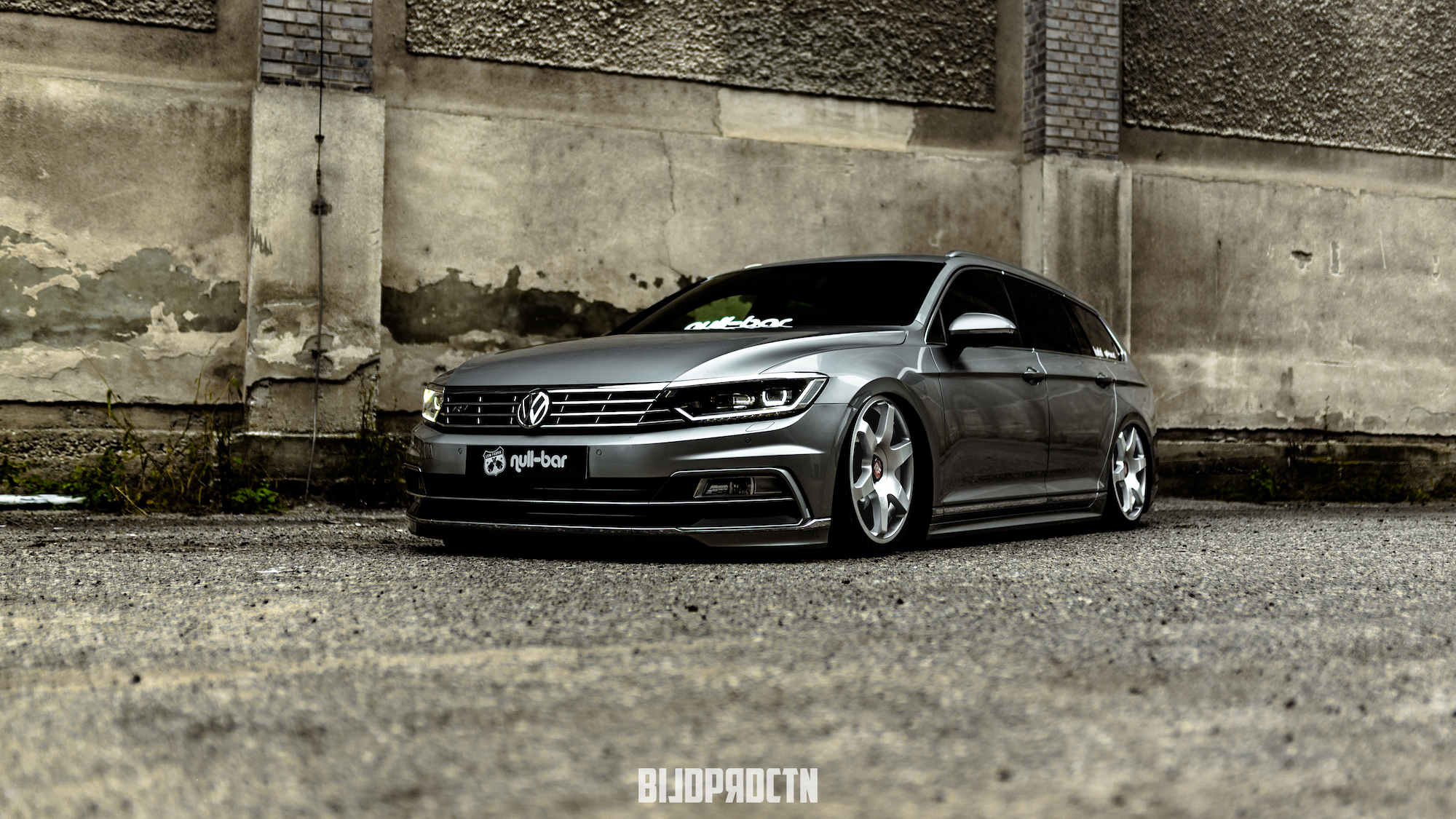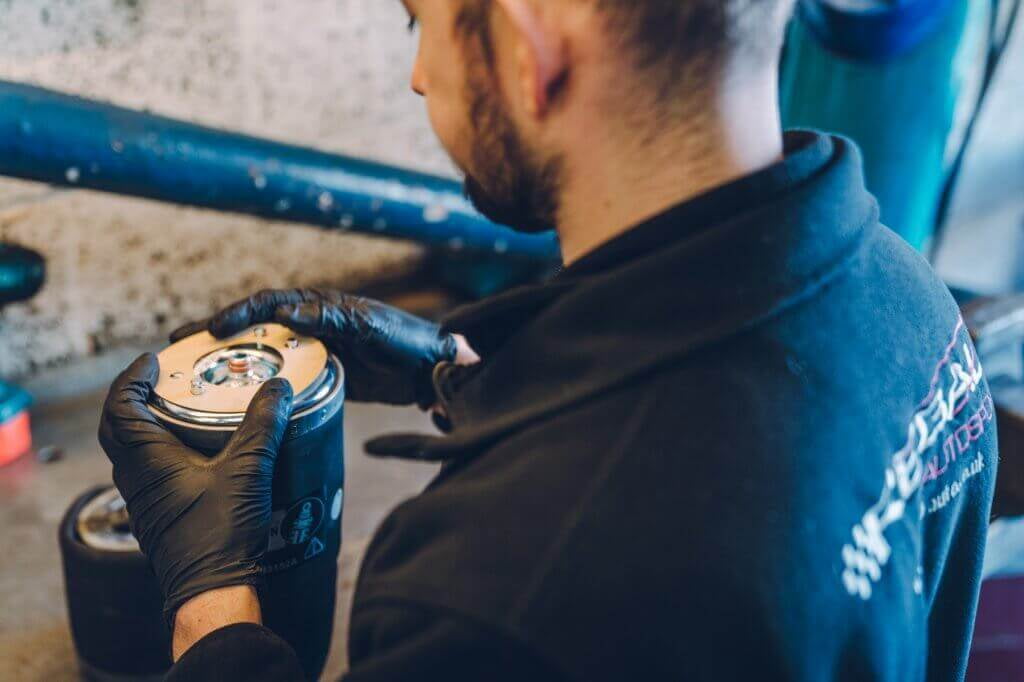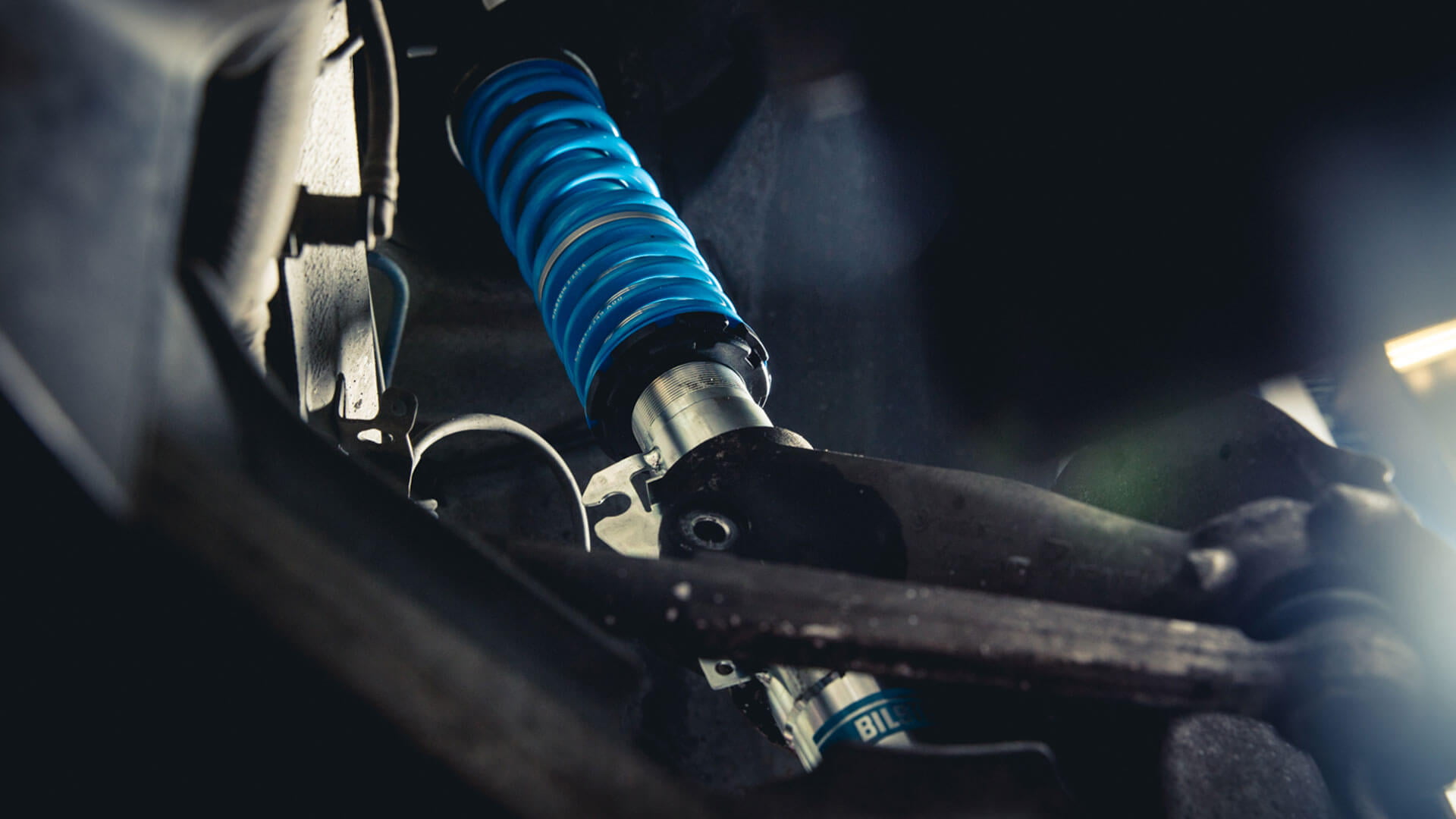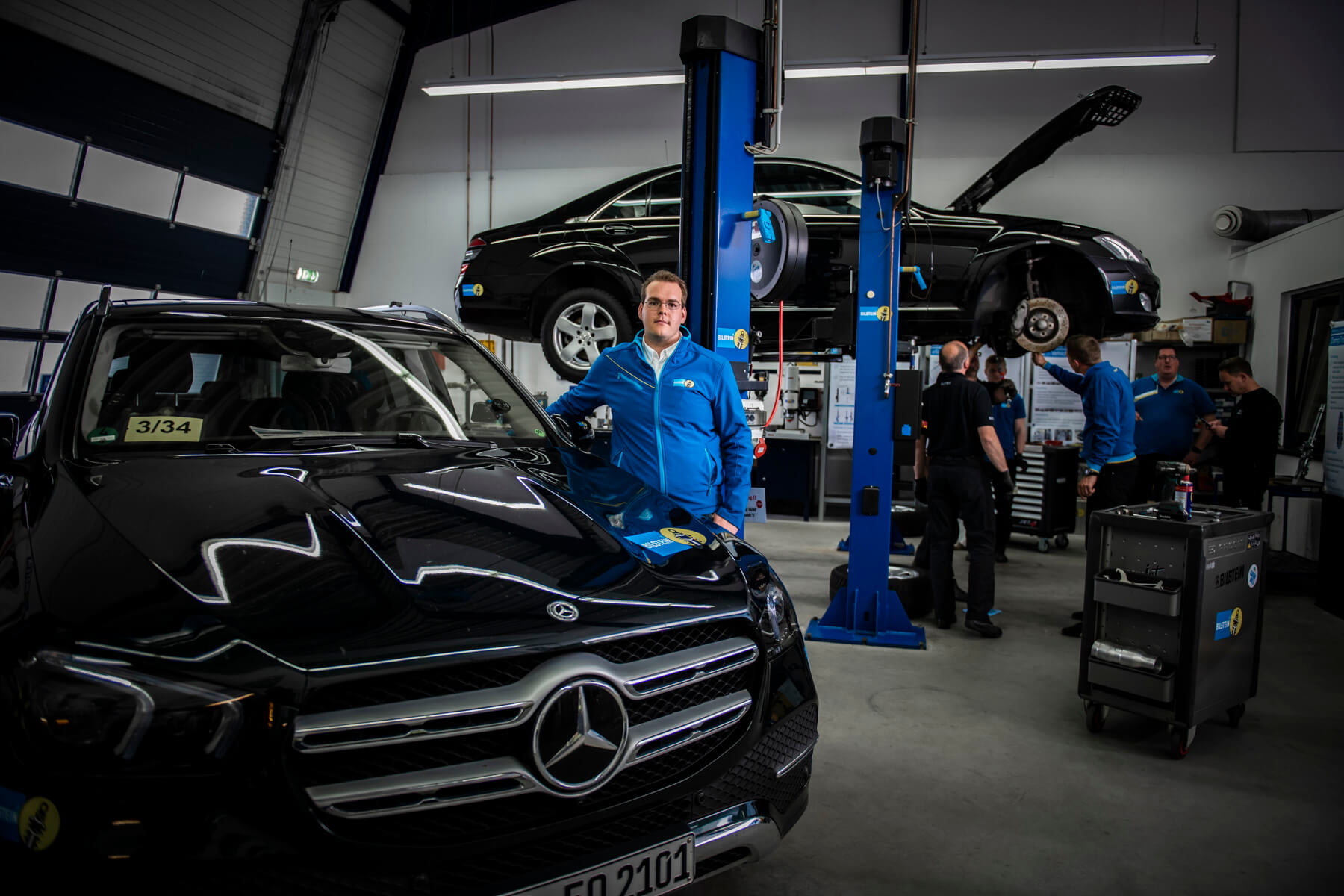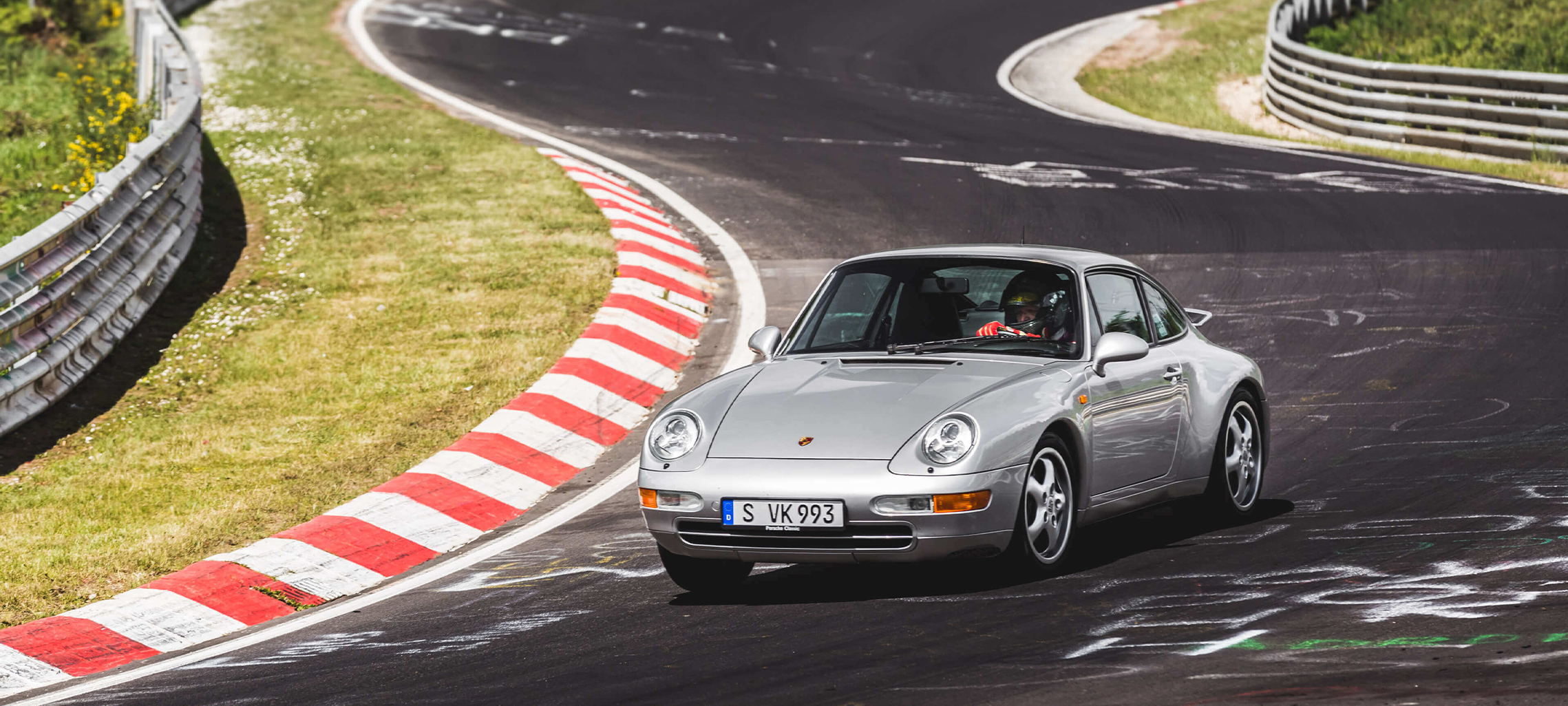- Definition: What is car tuning?
- What is important when tuning a car?
- Which vehicles are best suited for car tuning?
- Where to buy tuning parts and accessories?
- Tuning professionals: What does a tuning workshop do?
- This is where tuners meet: important tuning fairs and events
- Frequently asked questions about car tuning


Auto Tuning: The Complete Guide for Beginners & Pros
Tuning your own car is more than just a hobby for many people. In this guide, we, as manufacturers of tuning products and suspension systems, would like to share our knowledge with you and examine the subject of car tuning in as much detail as possible. Whether you are a beginner or an old hand, our guide will help you.
Let’s jump right in, these are the topics at a glance:
Definition: What is car tuning?
When we talk about “tuning”, we generally mean improving the appearance, performance or handling of cars and other vehicles. There are four basic categories of tuning and customizing vehicles: Engine tuning, suspension tuning, body tuning and interior tuning.
Often, tuners, workshops and manufacturers do not limit themselves to one specific type of tuning. In order to meet the personal preferences of the tuners, the adjustments to one’s own car often take place simultaneously across the various sub-areas of tuning:
Engine tuning
Old engine out, more powerful engine in: This radical cure is often carried out, but strictly speaking it does not count as tuning for many tuning fans. For them, tuning is about improving, expanding or tuning existing vehicle parts so that they deliver more power.
One measure of engine tuning is quite classically the enlargement of the cylinder capacity: In the process, the cylinder bore is enlarged – which is referred to as “boring” in the scene. Why does engine performance increase with larger cylinders? Quite simply: more air/fuel mixture can be burnt in larger cylinders than in smaller ones. This provides an increase in power.
Turbocharging the engine is another way to increase engine power. With the help of turbochargers or superchargers, it is possible to increase the mean pressure and thus the power. The higher pressure improves the degree of filling so that more air is available for the combustion of fuel.
Chip tuning does not require any intervention in the mechanics of the engine. Here, the engine performance is increased through targeted changes to the factory-set control parameters of the electronic engine management system. In this way, the boost pressure of the turbocharger or the amount of fuel to be injected into the combustion chamber can be increased. The measures lead to an increase in engine power and torque.
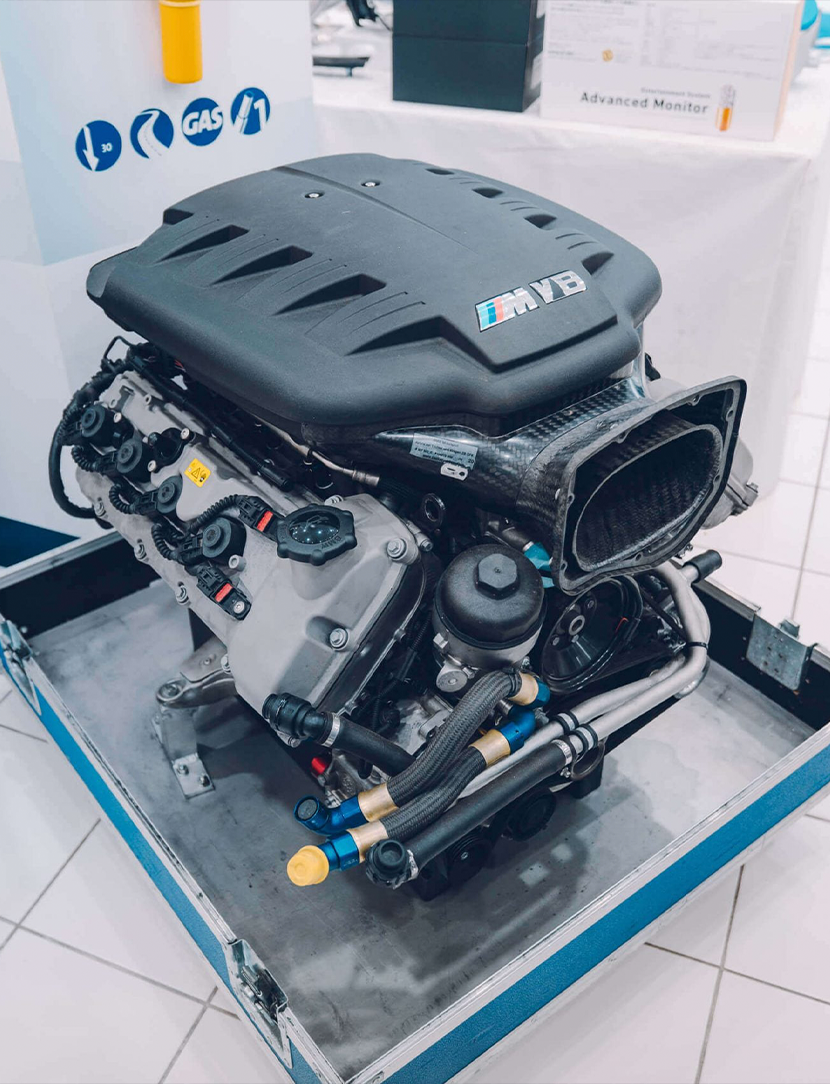

Suspension tuning
Car manufacturers design the suspension of their cars to appeal to the widest possible target group. But this does not suit everyone’s taste. For tuners, suspension tuning – the modification of suspension components – is therefore an integral part of their daily business. Moreover, it proves to be particularly effective. Suspension tuning fulfils two of the owners’ wishes: it enhances the car’s handling and appearance. Engine tuning, on the other hand, remains hidden under the bonnet.
Lowering
Lowering refers to the lowering of the vehicle body. A lowered car is a classic in the tuning community because it simply looks sportier than the factory version.
But what is the point? The basic idea is: a lowered car has a lower centre of gravity. As a result, it sits better on the road and behaves more sportily, especially in curves. But lowering the car can also have disadvantages – especially in traffic. The driver has a poorer overview. In addition, kerbs and bumps can suddenly become a major obstacle.
Most tuning fans are happy to accept this, of course. They have several options for bringing their suspension a little closer to the asphalt. The simplest and cheapest is to install lowering springs. More complex are coilovers and sports suspensions.
Lowering springs
Lowering springs are shorter and have a firmer spring rate than the standard ones, so they are “harder”. As a result, the vehicle rolls and pitches less and responds more quickly to the driver’s steering commands. However, sports springs should always be considered in combination with the shock absorbers. After all, the standard shock absorbers are simply not designed for the shorter spring travel and harder spring rates of sports springs as a rule. That is why sports suspensions from premium manufacturers such as BILSTEIN always consist of shorter sports springs with specially matched sports shock absorbers. Our BILSTEIN B8 shock absorber for example is specially designed for use with lowering springs.
Sports suspension
Tuners use the term “sports suspension” to describe suspensions which combine shorter sports springs and firmer-tuned shock absorbers. Standard sports suspensions are aimed at drivers who want a sporty look and set-up – without sacrificing much in the way of comfort. Many manufacturers offer such complete suspensions. They usually include four shortened shock absorbers and appropriately tuned lowering springs. The BILSTEIN B12 sports suspension kit, for example, belongs in this category.
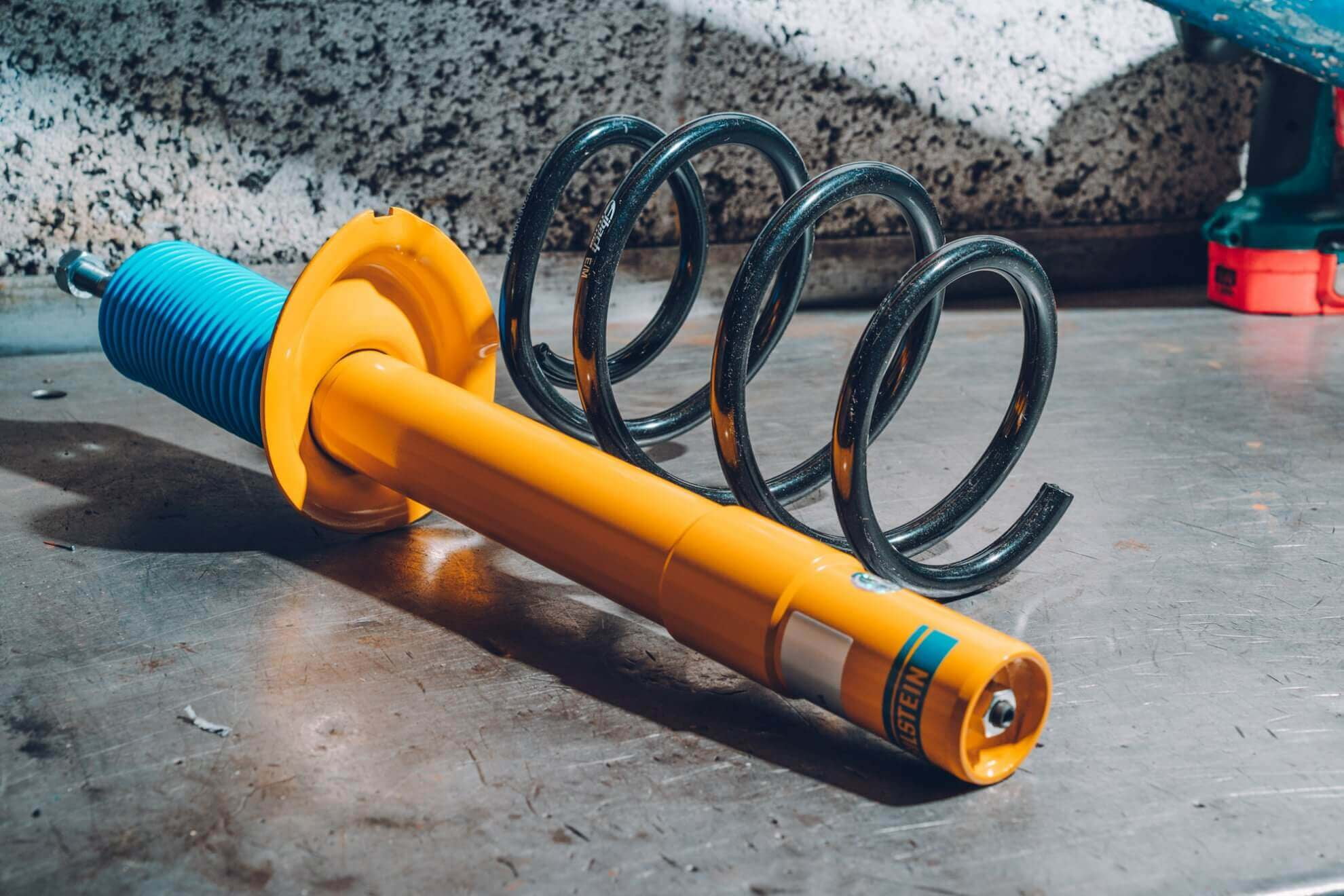
Coilovers
The most technically complex but also the best way of lowering a vehicle is to use coilover suspension, also known as screw-in suspension. These include, for example, the BILSTEIN B16 or the BILSTEIN EVO T1 coilover suspension. The shock absorbers or spring plates have a thread that tuners can use to adjust the lowering precisely. Many coilovers also allow individual adjustment of the damping forces. A small wheel on each shock absorber can be used to set different hardness curves or characteristics from soft to particularly firm, which strongly influence the driving behaviour. In this way, drivers who are experienced in driving dynamics can set up their own personal set-up.
Coilovers are recommended exclusively for sporty drivers who want to adapt their suspension completely to their individual wishes.
Caution: The installation of a coilover suspension is complex and should therefore only be carried out by a specialist workshop.
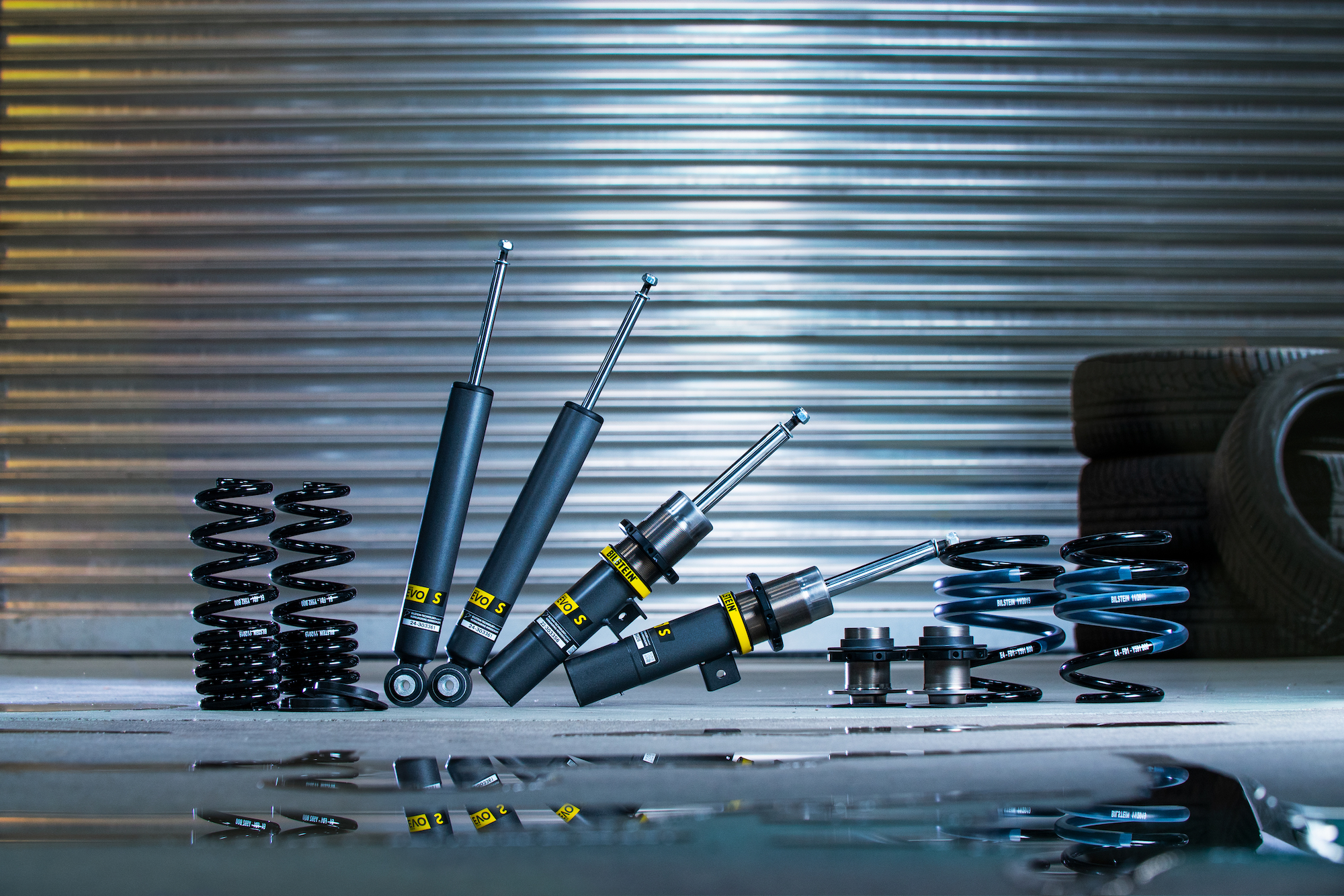
Stabilisers
The stabiliser is a steel spring, bent several times, that connects the two wheels of an axle. The stabilisers ensure that the vehicle rolls less in curves. This improves the driving dynamics and the maximum possible speed in curves. With stabilisers, the so-called wheel loads can be influenced and thus the self-steering behaviour of the vehicle. A harder stabiliser at the front reduces oversteer or promotes understeer. A harder stabiliser at the rear reduces understeer or promotes oversteer.
Lowrider
This is tuning for gourmets: In cars called lowriders, each wheel suspension can be raised and lowered individually in a matter of seconds. This allows cars to drive in an extremely tilted position, for example, or to bounce up and down. The trend originates from the USA, where mainly large bodies or jeeps are tuned in this way. But the number of lowrider fans is also growing in Germany.
How does a car become a lowrider? Tuners first stabilise the axles so that the vehicles are ready for the powerful jumps popular at tuning shows. Then hydraulic or pneumatic pumps are installed on each wheel, which can be controlled independently. Their operation is not always taken over by drivers. Sometimes a remote control has a more amazing effect. Because with its help, the car jumps even without a driver.
Hydraulic suspension systems
A hydraulic or hydropneumatic suspension raises a car continuously and lowers it again. This level control can have some advantages, and not only for sporty drivers. As the driving speed increases, the suspension can lower the car’s centre of gravity. In this way, the hydraulic suspension improves handling and at the same time reduces air resistance. In addition, the ground clearance can be adjusted to the load condition.
In some systems, the suspension can also automatically adjust the ground clearance to the road surface. Together with a sophisticated sensor system, these systems detect road irregularities. The suspension adjusts to road irregularities before the vehicle drives over them by adjusting the damping of the wheels as best as possible.
Air suspension and air ride systems
In air suspension, a shock absorber specially adapted to this kind of suspension and an air bellows replace the otherwise usual steel springs. In the tuning sector, the aim is to adjust the height of the car steplessly. This is often operated by a smartphone app or remote control. With tuning air suspensions, extreme lowering but also raising is possible.
Thus, the air ride suspension cancels out the disadvantages of lowered cars. Because curbs are no longer an obstacle. The car is driven nice and low, and the suspension only increases in height when necessary. Air suspension systems have also gained popularity among tuners in Germany recently – also because many cars with air suspension modules drive like on clouds.
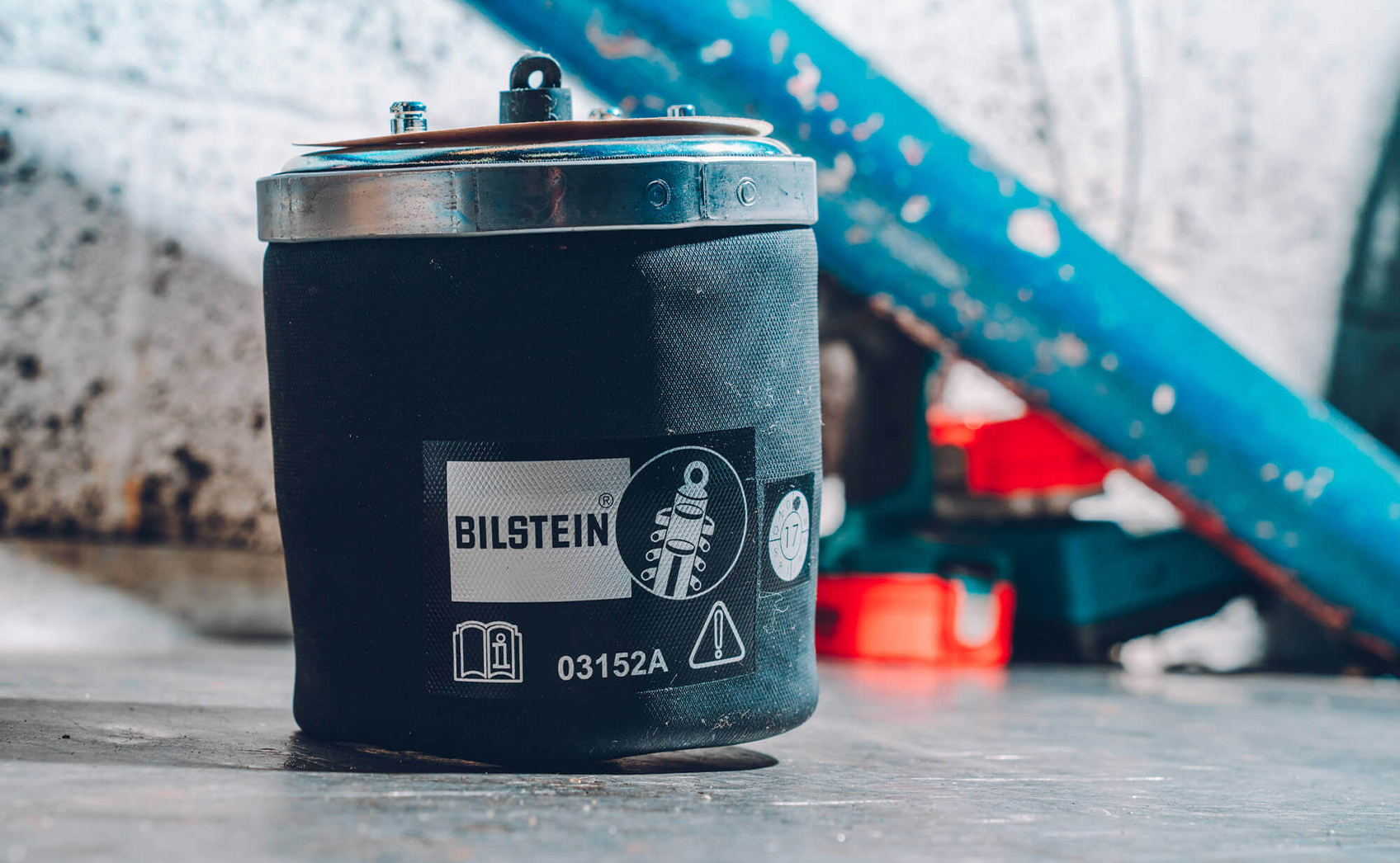
Strut mounts and struts
The strut mount connects the strut to the body. It dampens noise and vibrations there, and ensures that both are transmitted to the body to the smallest possible extent.
Especially for sporty cars with lowered suspension, better strut mounts are recommended than those installed at the factory. They are usually made of high-strength aluminium (Unibal) and can be individually adjusted to the vehicle using various settings. In addition, improved strut mounts work more precisely and convey a more direct driving feel. Due to a refined surface, they are usually also more stable.
Struts are bolted crosswise in the engine compartment and in the boot. The ends of the metal strut enclose the upper strut domes. The aim is to increase the stiffness of the body, or the “torsional stiffness” of the body. Installation is not difficult and material costs are manageable. Strut braces are therefore one of the most effective tuning tools.
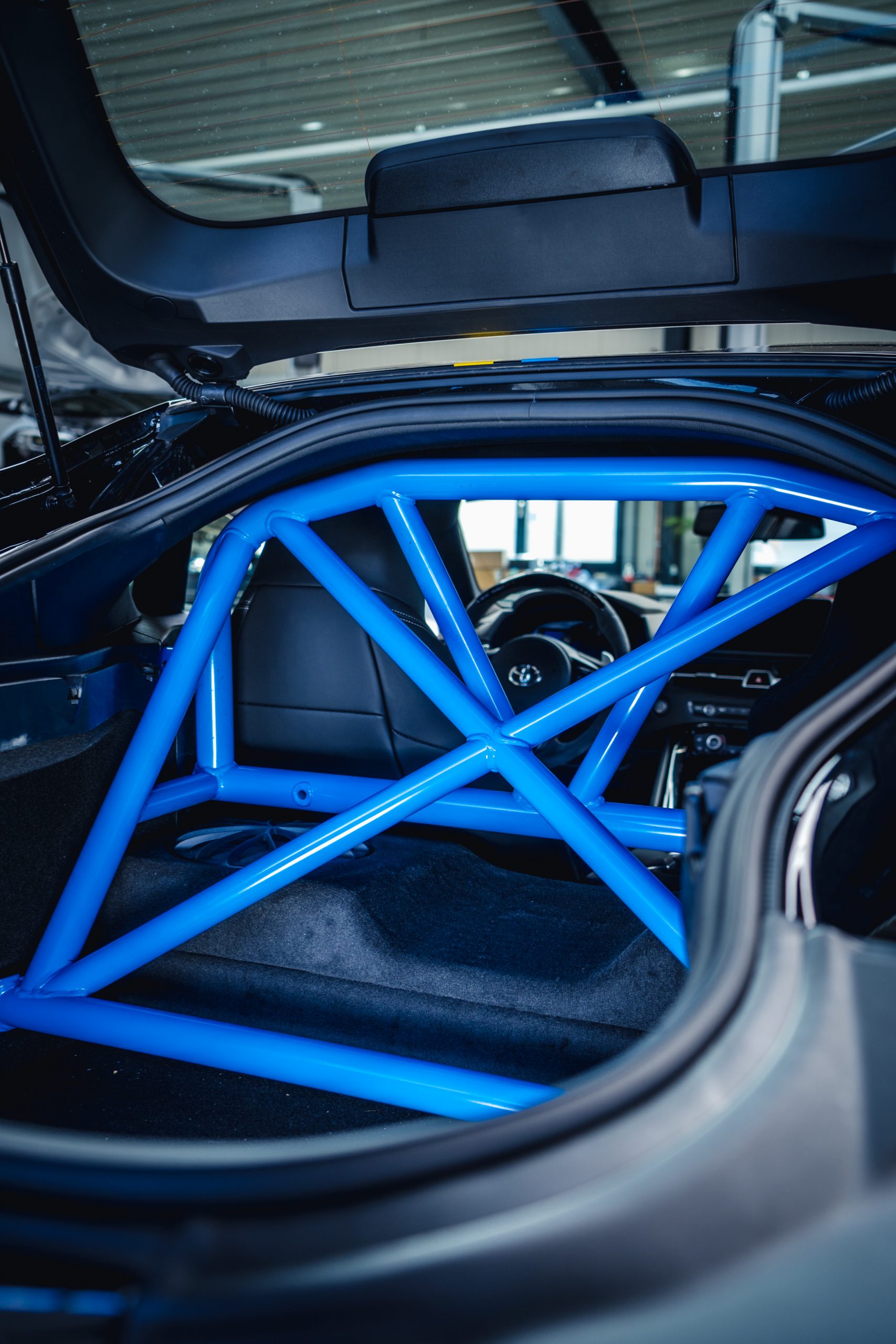
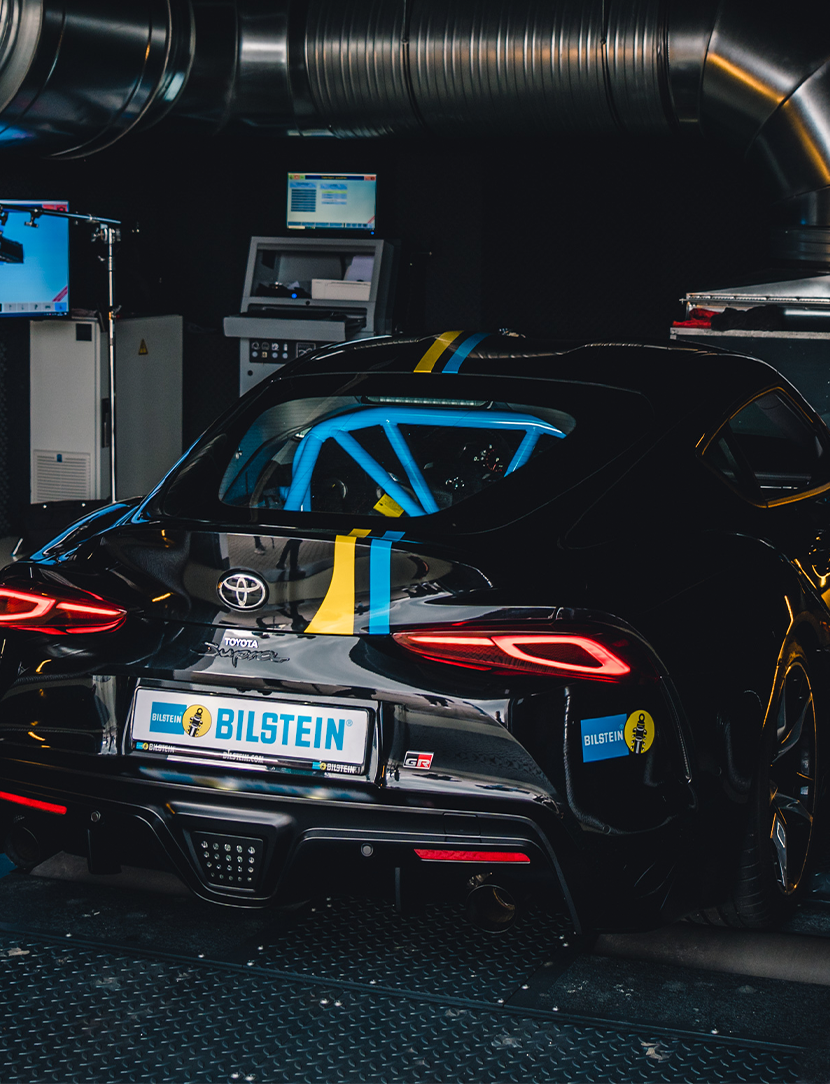
Suspension bearing
The suspension determines ride comfort, safety and dynamics – especially during road bumps and cornering. In tuned cars, the rubber-to-metal parts between the individual suspension components – the suspension mounts – are often the weakest link of all the components. This is because they are designed for comfort at the factory and wear out faster than desired due to higher stress. The consequences are annoying noises and less precise steering.
Rims and tyres
Car owners often start tuning with sports rims. They are the car’s calling card, so to speak. The range of products is correspondingly diverse. Configurators on the Internet can help with the agony of choice. These websites show you whether your car looks best with classic five-spoke rims, a retro look or rotor rims.
But looks alone should not be the deciding factor. A little expertise is needed when choosing the material of the rim:
Steel rims are heavy and can rust. On the other hand, they are suitable for winter use. Aluminium rims are more expensive, but thanks to their lighter weight they provide better driving dynamics. But they need a little love: only those who take good care of them will make it through the winter with a visually flawless appearance. Magnesium rims come into play one price level higher. They are ultra-light and yet extremely stable.
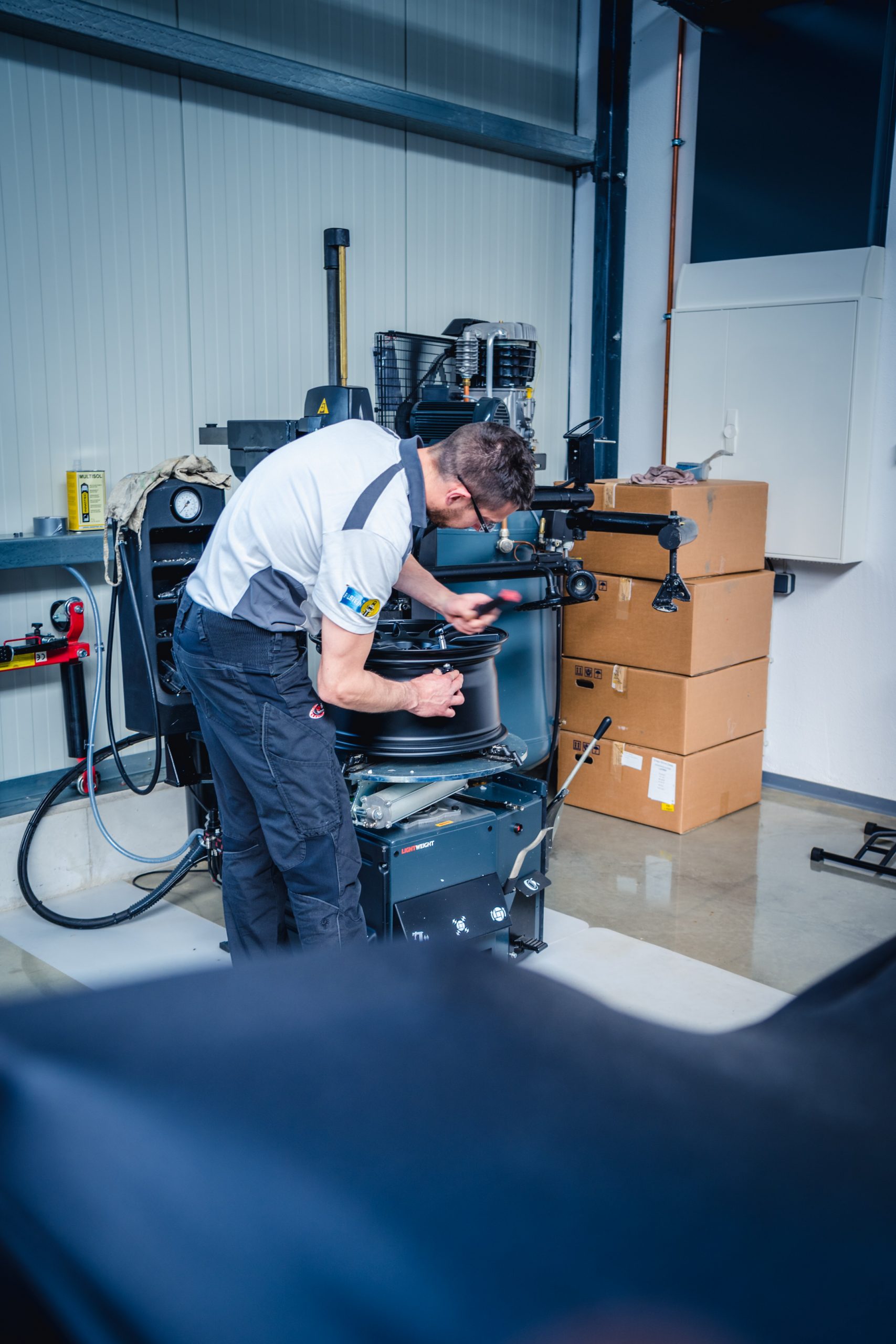
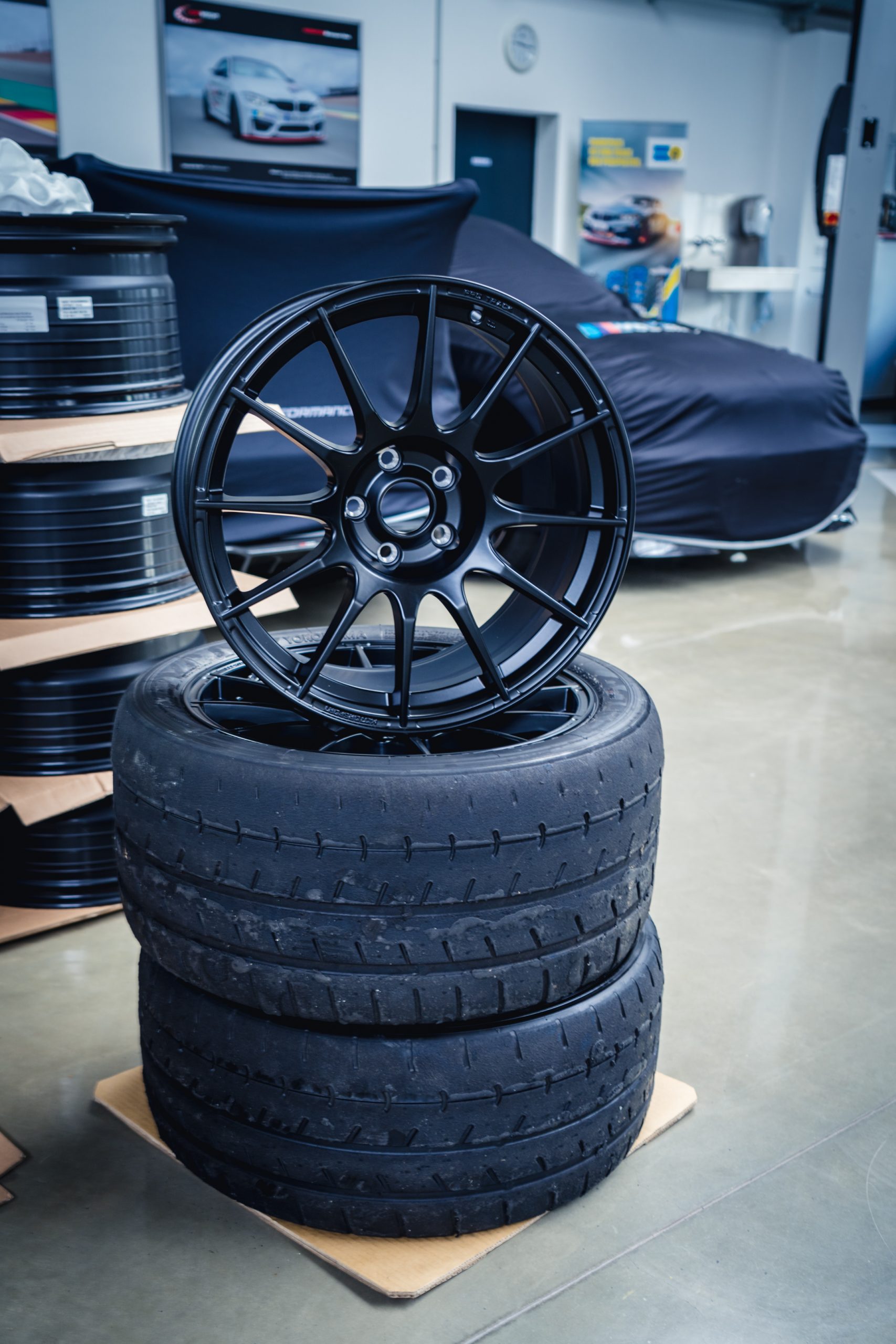
But no matter how striking the look of a rim, unfortunately not everything that is pleasing is allowed. Highly luminous elements or components protruding from the side, for example, are prohibited. This is because the rim size and tyre size must correspond to the specifications in the registration certificate. Other rim and tyre sizes that you may be allowed to drive can be found in the CoC document (Certificate of Conformity) of your vehicle. Tyres must not protrude too close to the bodywork. Of course, the load capacity must also be correct to ensure safety.
This applies equally to the tyres fitted. Poor tyre grip, i.e. insufficient grip on the road, can have fatal consequences. That is why there are a few legal restrictions here as well. Slicks, i.e. tyres without tread, are not permitted. The law requires a minimum tread depth of 1.6 millimetres. In addition, as a rule, all tyres on the car must be the same size. The permissible tyre size is stated in your vehicle registration document.
When it comes to tyre design, self-adhesive tyre strips emphasize the look of the rim. The name of the tyre manufacturer does not always have to be on the tyre – the name of the driver or the tuning club is also popular.
Exhaust system
The exhaust pipe forms the end of the car and the end of the exhaust system. Depending on the vehicle, several exhaust pipes may be installed. For a sporty look, tuners change at least the tailpipe with a sportier look. A tuning exhaust system can also significantly change the sound. In conjunction with a new manifold or downpipe, more horsepower can also be achieved. Important for the tuning exhaust system: Pay attention to the approval.
Lighting
Customizing the lights is also very popular – especially since LED technology has opened up new possibilities. Car tuners achieve striking effects with the light tone as well as the shape and brightness of the headlights. Turn signals are also replaced or fitted with different colouring, although attention should be paid to permissibility here, of course. Almost standard, meanwhile, is a light bar as an indicator at the rear, which flits across the rear of the car from the inside to the outside.
In the case of the rear light, LED technology reveals further advantages in addition to a more attractive appearance: The brighter beam makes the car more visible, and the LED lamps react more quickly as brake lights than other light sources.
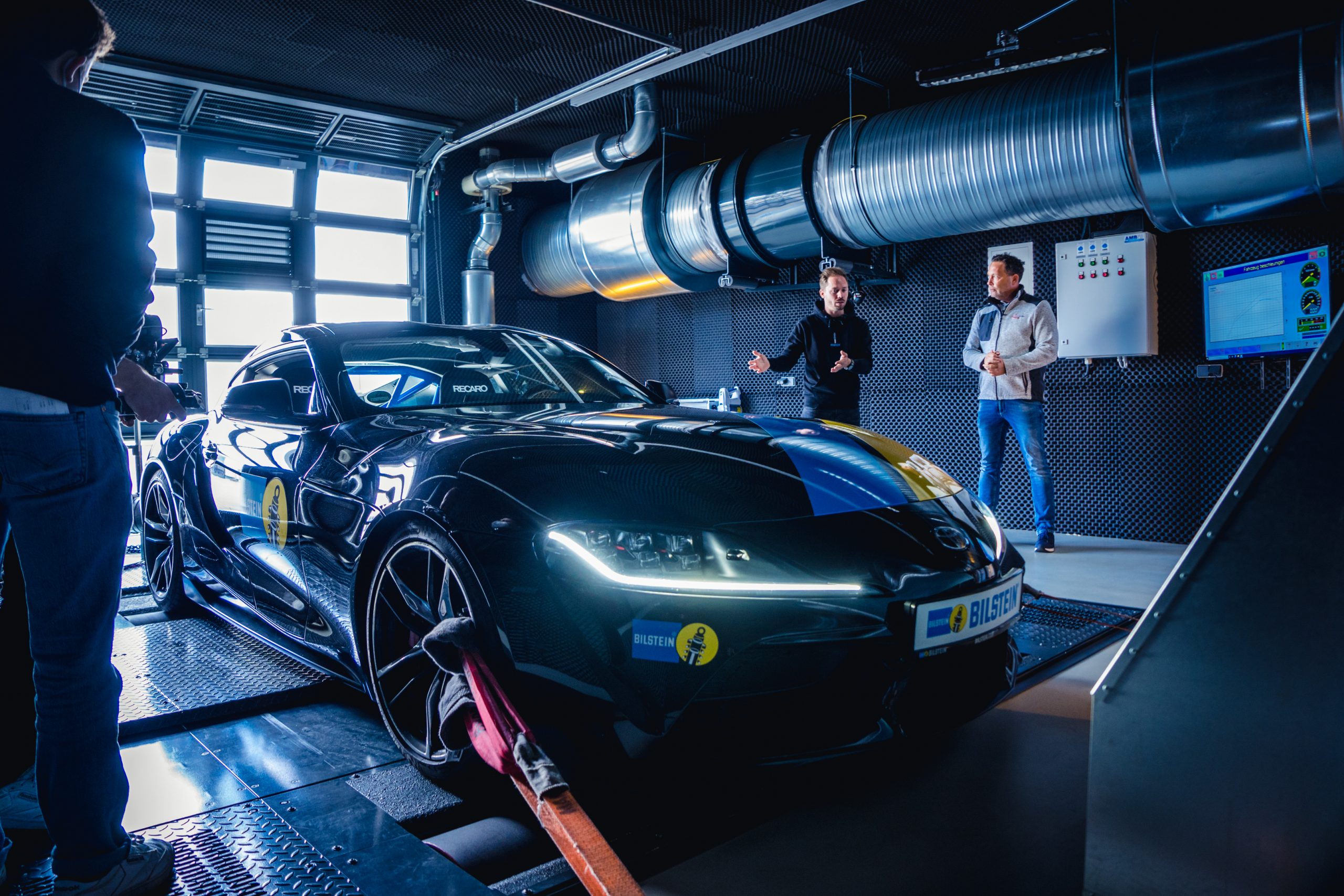
Body tuning
Body tuning ranges from new wheel rim paintwork and the fitting of a spoiler to the replacement of standard parts. Especially when it comes to appearance, there are almost no limits to the imagination.
Many tuners start with so-called cleaning. They first hide everything that is visually distracting: lettering and logos are removed or pasted over in so-called wrapping, mouldings or door handles are removed.
Popular starting points for initial component modifications are also skirts or the radiator grille. New sports grilles are usually a simple facelift with a big effect. Adding a rear apron, on the other hand, makes the vehicle appear wider and gives it a richer appearance on the road.
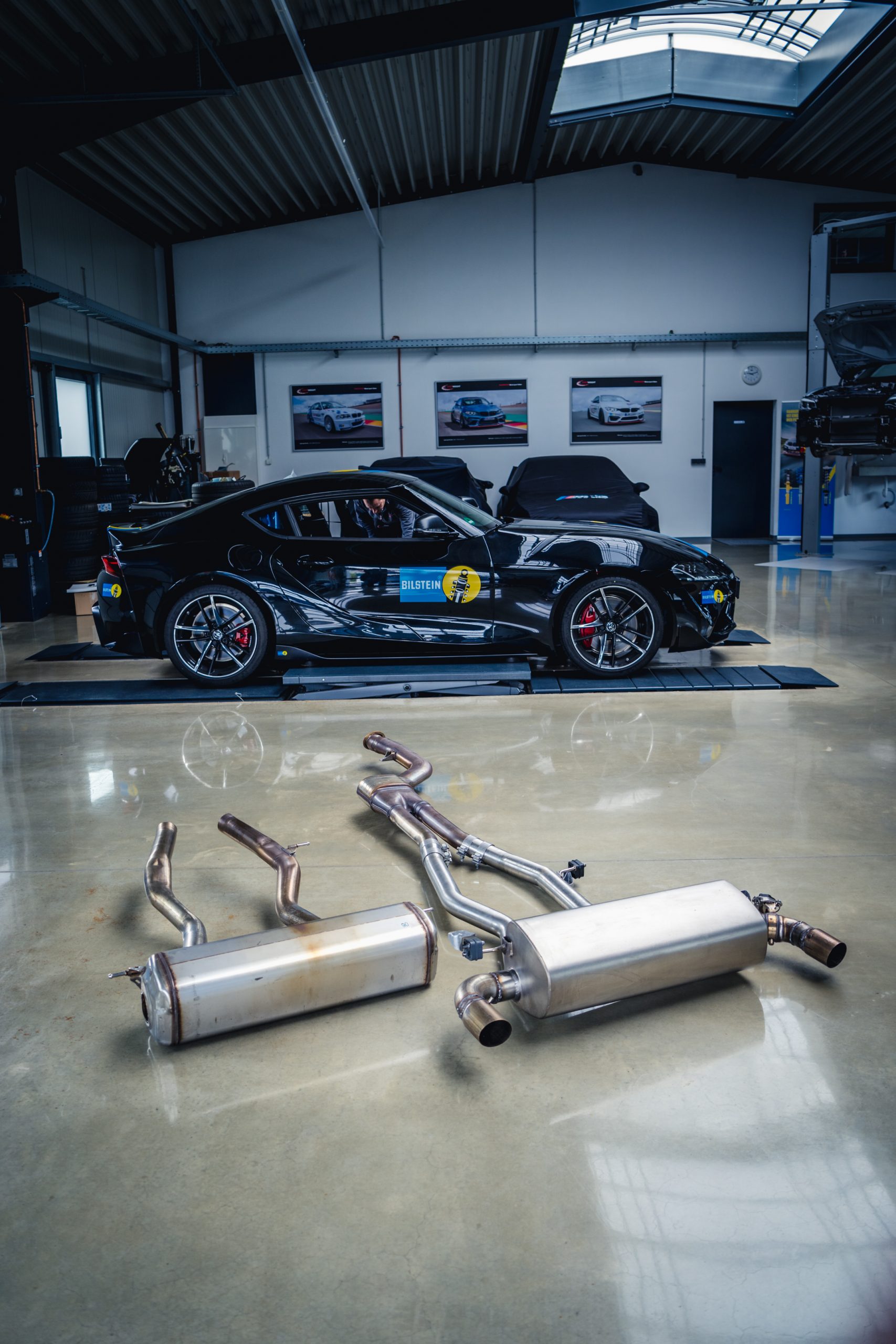
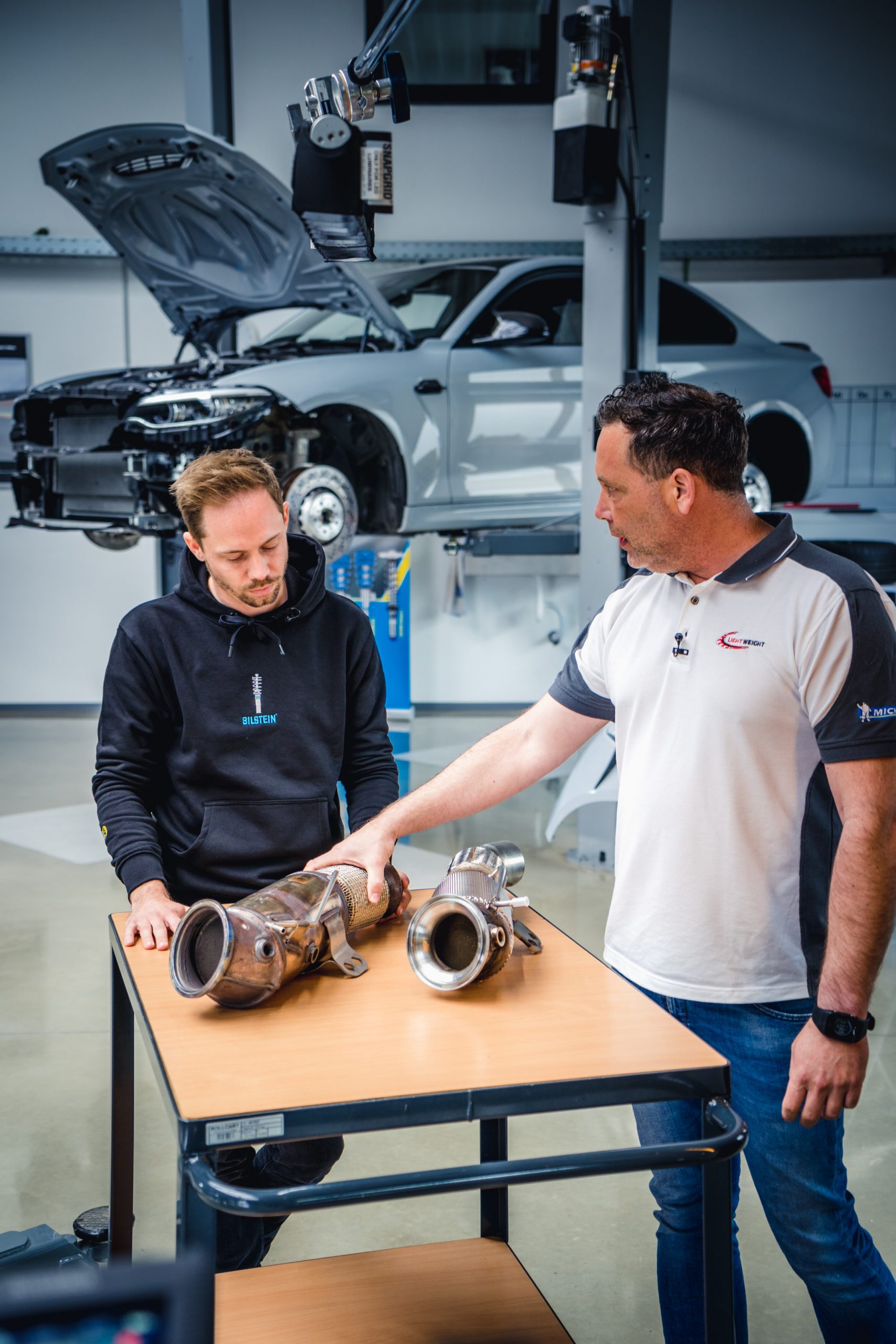
When chopping, certain lengths are cut out of supporting parts (A-, B- and C-pillars) of the body. This changes the dimensions of the body. The roof appears lower, the windows smaller.
The classic tuning object is the spoiler. Whether at the front or the rear, the visual effect is enormous. But as much attention as the new component draws to the tuned vehicle, by no means every spoiler improves driving performance. This can be the case, for example, if the vehicle experiences too much air resistance at high speed.
And so the spoiler is an example of the tightrope walk in body tuning. After all, many of the attractive embellishments can worsen the driving characteristics under certain circumstances: Wide tyres can increase rolling resistance, deep skirts can touch down on the road and add-on parts of all kinds increase the overall weight.
For this reason, every tuner must be clear whether he wants to tune primarily for looks or for performance.
Interior and audio tuning
Sports seats are a grateful tuning part: they usually not only look better than standard plush seats, they also optimize the car’s functionality and sportiness. Drivers praise the stronger lateral support and the feeling of being one with the car. In addition, there is an individual design and the option of sitting on leather instead of plastic.
But the interior can also be smaller: floor mats adapted to the vehicle, a sports steering wheel and, of course, the conversion from the standard 3-point safety belt to a 4- or 6-point belt not only improve the driving experience, but also ensure safety and more respectful looks at tuning meetings.
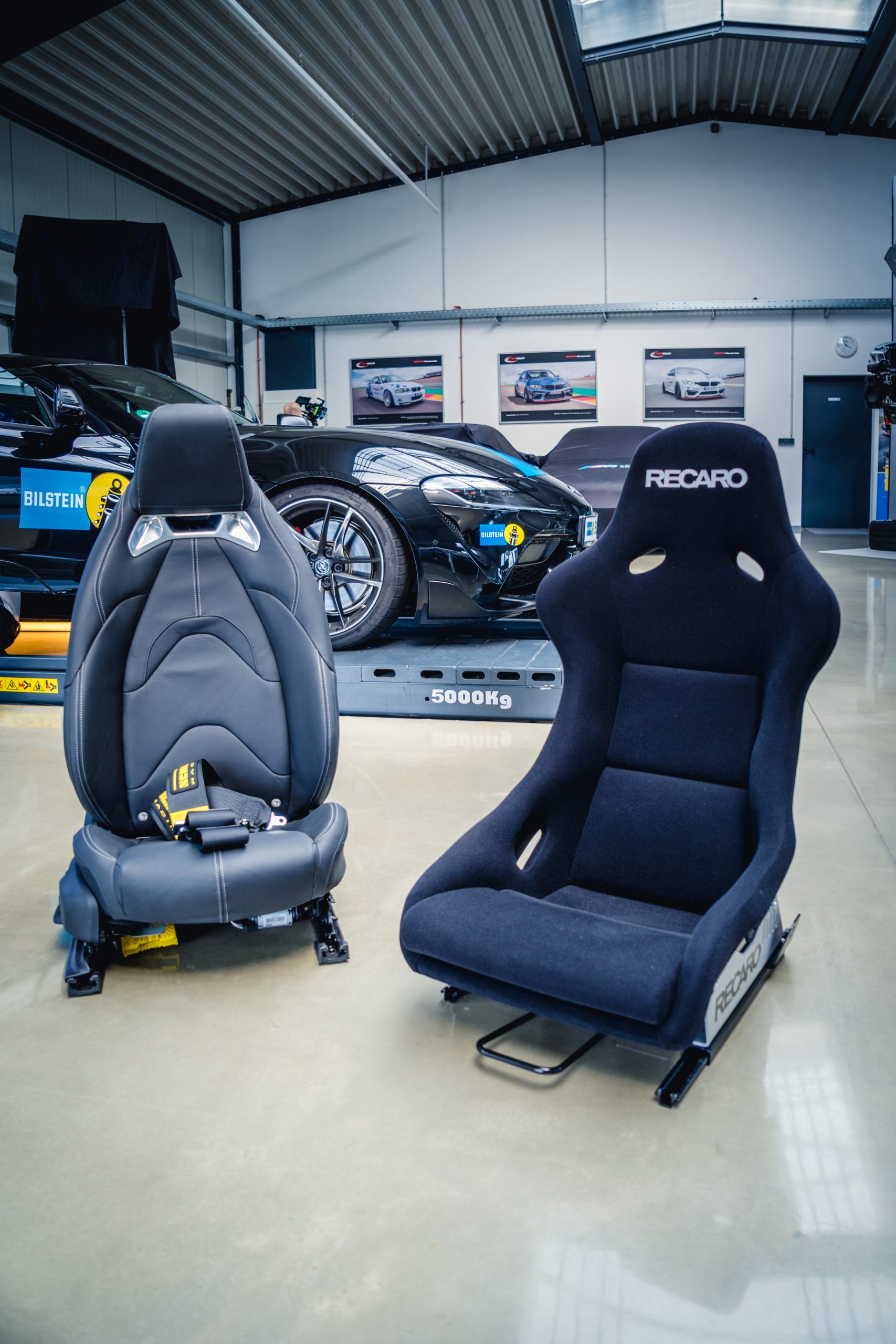
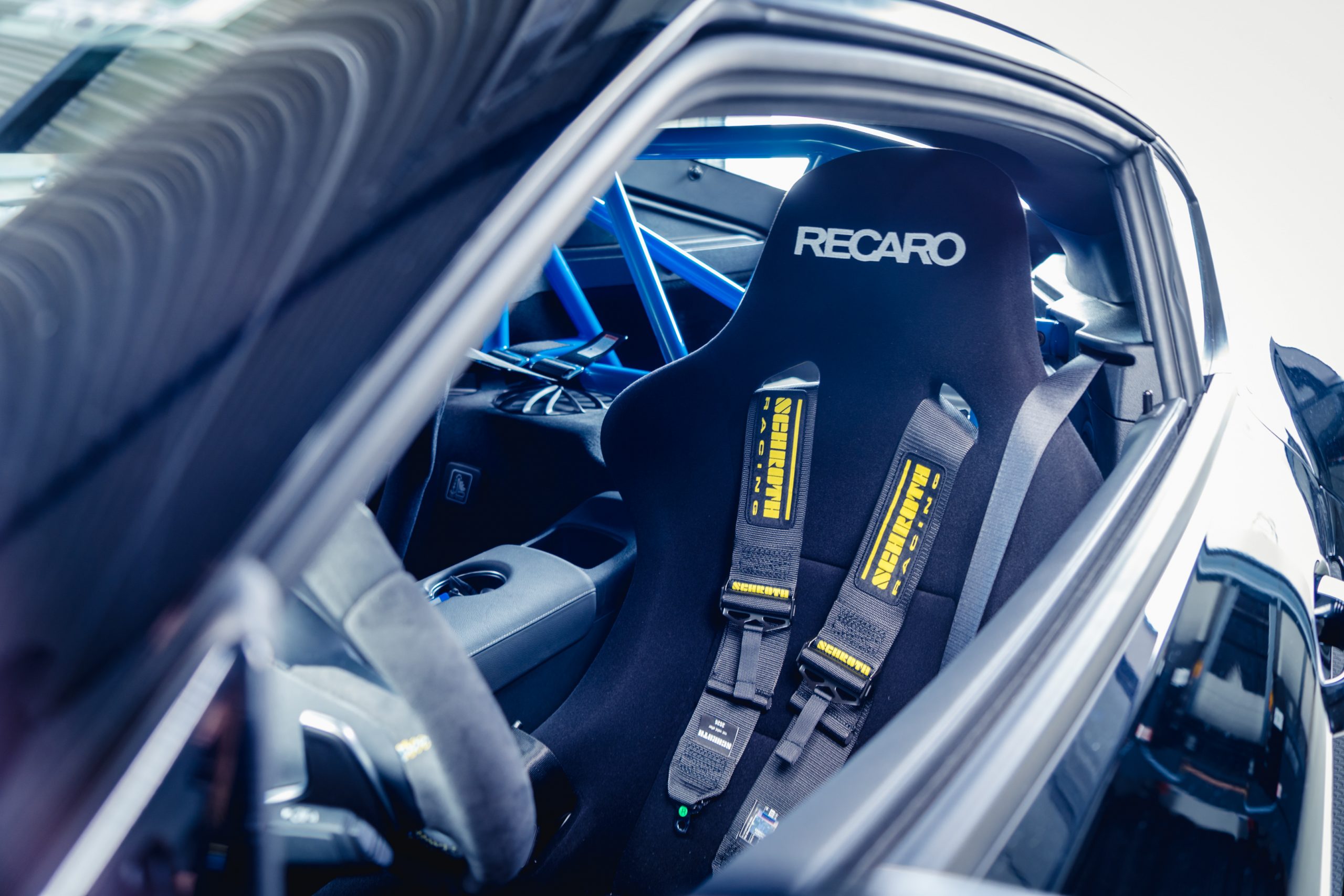
A top sound system in the car is primarily acoustically convincing – some bass can even be felt in the stomach. But tuners can get into trouble for this. Because if the installed system is too loud, the police may interpret this as noise pollution. Then there is the threat of a fine. Nevertheless, it may be advisable to use special car speakers with subwoofers for bass frequencies. Together with a so-called crossover, these elements ensure a rich sound despite the usual driving noise.
What is important when tuning a car?
Caution! Anyone who tunes without restraint is living dangerously. Because depending on the country in the tuning sector, many regulations for a wide range of components cause uncertainty. Every part that you retrofit to your car can lead to the expiry of the operating licence and thus to hefty fines. You may also no longer be allowed to drive the vehicle on public roads.
An inspection of the constructional measures on the car by experts can prevent this. But how do you get the approval? A parts certificate or an ABE certificate (general operating permit) in Germany can help you here.
Parts certificate
A parts certificate is normally supplied with safety-relevant car parts. However, this does not mean that the part has been properly installed and thus possibly endangers road safety. For components with a parts certificate, in some countries it is therefore necessary to have an installation inspection carried out by a certified body such as DEKRA, GTÜ or TÜV in Germany. The experts there check the functionality of the component and the vehicle after installation.
If the test is positive, you can take the certificate of the modification inspection to the responsible registration office. There, the modifications will be entered in the registration certificate.
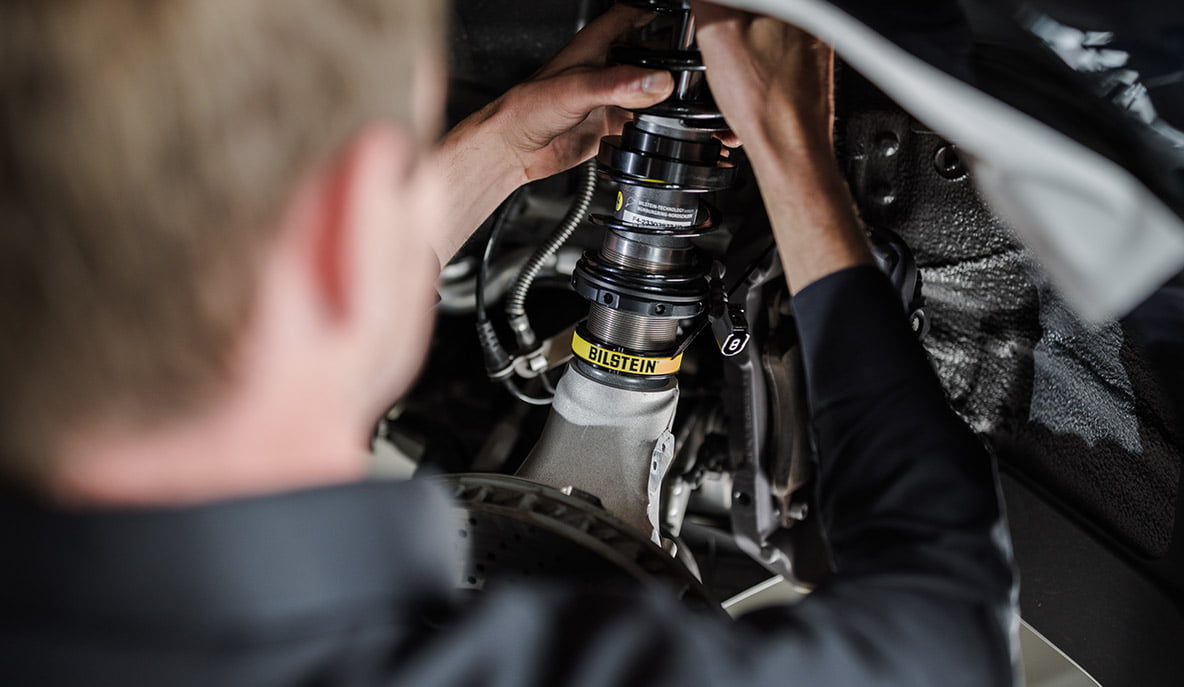
ABE – General Operating Permit
The parts certificate is not always necessary. If a part is delivered with an ABE certificate, this lists the vehicle models on which the part may also be installed. A new inspection by an expert after tuning is not necessary. However, you must be able to show the ABE at a traffic control.
Fines for car tuning (examples)
Caution: If you overreach with tuning, you risk your budget for the next tuning meeting or the much longed-for stylish aluminium rims. Because the state doesn’t take a joke when it comes to illegal tuning. Even minor offences cost big money:
Hifi Tuning
- Music too loud: € 25
- Obstruction of an emergency vehicle: € 240
- Overloading: up to € 235
- Slipping of the load: up to € 75
Rims
- Construction of the vehicle does not comply with the regulations: up to € 90
- Driving without an operating licence: up to € 90
- Exceeding the dimensions: € 60
Exhaust
- Noise pollution: € 30
- Exhaust gas nuisance: € 80
Lighting
- Obscured or dirty light: up to € 35
ABE
No operating licence due to modifications to the car: at least € 50
No operating licence carried: € 10
Prices are based on the german catalogue of fines.
Which vehicles are best suited for car tuning?
A very difficult question! It certainly cannot be answered with a simple ranking list. The tastes of tuners are too different. Professionals specialise in all kinds of models. And of course, the country you come from always plays a role. That’s why German cars are more popular in Germany, French cars in France and Japan also has its own strong scene.
But there are still a few guidelines: if you want to tune your car optically, German models are more recommended. Especially for the strong-selling brands Audi, BMW, Ford, Opel and VW, there is a huge range, for example, of wheel rims, seats and spoilers. For Fiat, Peugeot and Renault, the air is a little thinner. And if tuning parts come from Japan, that doesn’t make them any cheaper.
Small or compact cars with turbochargers and hot hatches are particularly suitable for inexpensive engine tuning. These models, such as the Golf IV Turbo, can be spiced up at comparatively low cost. The Mazda MX5, the Toyota Supra and models with the BMW N54 engine are also popular. But beyond that: many experts, many opinions. That’s why simple advice in the tuner community is: “Tune the car you like best.”
Major tuning companies and manufacturers
- Abarth
Specialized in Fiat
Hanauer Landstraße 176, 60314 Frankfurt am Main
Phone: +49 (69) 66 98 80
Mail: [email protected]
Link to company website → - AC Schnitzer
BMW, Mini, Land Rover
Neuenhofstraße 160, D-52078 Aachen
Phone :+49 (0) 241 5688130
Mail: [email protected]
Link to company website → - Alpina
BMW
Alpenstraße 35-37, 86807 Buchloe
Phone: +49 8241 5005-0
Mail: [email protected]
Link to company website → - AMG
Mercedes Benz, Maybach, Smart, u.a.
Daimlerstrasse 1, 71563 Affalterbach
Phone: +49 (0) 7144 302 0
Mail: [email protected]
Link to company website → - Gemballa
Porsche
Mollenbachstr. 17, D-71229 Leonberg
Phone: +49 (0) 7152 97990-0
Mail: [email protected]
Link to company website → - Hamann
BMW, Mercedes Benz, Porsche, Ferrari, Mini, Range Rover
Käßbohrerstraße 3, 88471 Laupheim
Phone: +49 (0) 7392 97320
Mail: [email protected]
Link to company website → - Irmscher
Opel, Chevrolet, Saab, Cadillac
Bahnhofstr. 75, 73630 Remshalden
Phone: +49 (0) 7151 971 0
Mail: [email protected]
Link to company website → - Je-Design
VW, Seat, Audi, Skoda:
Benzstraße 18-20, D-74211 Leingarten
Phone: +49 (0) 7131 2 03 84-0
Mail: [email protected]
Link to company website → - MTM
Audi, VW, Lamborghini, Bentley, KTM, Spyker, Porsche,
Dr. Kurt-Schumacher-Ring 48-50, D-85139 Wettstetten
Phone: 0841 981880
Mail: [email protected]
Link zur Firmen-Website → - Oettinger
Tuner spezialisiert auf Audi, VW, Seat, Skoda
Max-Planck-Straße 36, D-61381 Friedrichsdorf
Phone: 06172 95 33-0
Mail: [email protected]
Link to company website → - Rieger-Tuning
verschiedene Fahrzeuge
Am-Rieger-Tuning-Ring, Weilbergstraße 16, D 84307 Eggenfelden
Phone: 08721 9619-0
Mail: [email protected]
Link to company website → - Steinmetz
Opel
Neuenhofstr. 160, 52078 Aachen
Phone: +49 (0) 241 5688-777
Mail: [email protected]
Link to company website → - TechArt
Porsche
Röntgenstraße 47, 71229 Leonberg
Phone: +49 (0) 7152 93 39-0
Mail: [email protected]
Link to company website →
Where to buy tuning parts and accessories? This is what you should consider before buying
To find the right accessories for your own tuning car, it is advisable to look in a shop that spezialises in tuning. Of course, you can also hunt for bargains on Ebay Classifieds, but as soon as it comes to your own safety, you should know exactly which dealer you can trust. In addition, the variety of products is large and sometimes complex. If a part has to be returned because it is not assembled properly, it is good to have an accommodating dealer.
In addition, you need a parts certificate or a general operating permit (ABE) for some parts. It’s good to know that this is actually included in the delivery.
Online Tuning Shops
Anyone who buys online should be quite critical. Particularly on the Internet, cheap replica parts are also offered, warns the TÜV. Reputable suppliers deliver the products with the necessary certificates and approvals. However, the TÜV also admits that even test reports could be forged.
If you want to be on the safe side, buy from the official BILSTEIN online shop. We offer thousands of products from the areas of suspension tuning, lowering and merchandise.
The advantage: if you buy a BILSTEIN suspension system from our shop, you can have it conveniently delivered to a BILSTEIN suspension expert of your choice and installed. Installation by trained experts gives you:
- two years extended warranty,
- a free suspension check
- and a 10 % discount on the installation costs
Tuning professionals: What does a tuning workshop do?
Clearly, you can do a lot of tuning work yourself. This includes, for example, minor paintwork, wrapping with foils or tinting windscreens. But when it comes to engine tuning or changes to the suspension and bodywork, you need specialist knowledge. If you have the necessary know-how but no equipment, you can demonstrate your skills in a workshop for hire. All others should make use of the services of a tuning workshop. This also applies when safety-relevant parts are being tuned – for example, changes to the suspension. Many tuning workshops receive their expertise directly from the parts manufacturer or the carmaker.
The workshop experts are happy to take advantage of this exclusive knowledge advantage.
Find a BILSTEIN certified dealer or tuning workshop near you now.
To workshop searchYou can easily find Bilstein experts throughout Germany. The workshop network is closely meshed with almost 500 BILSTEN partners. Our specialists have above-average qualifications for the installation of BILSTEIN dampers and suspensions. We therefore guarantee the best possible support for customers and vehicles.
This is where tuners meet: Important tuning fairs and events
What are track days?
A trackday is a free driving event on a track that has been closed off for this purpose. This can be a racetrack like the Nürburgring or a converted airfield tarmac. In any case, public traffic is kept out, and for once the road traffic regulations play little or no role. Not all track days require a track tool, i.e. a car specially tuned for this purpose. Basically anyone who can drive a tuned car can take part.
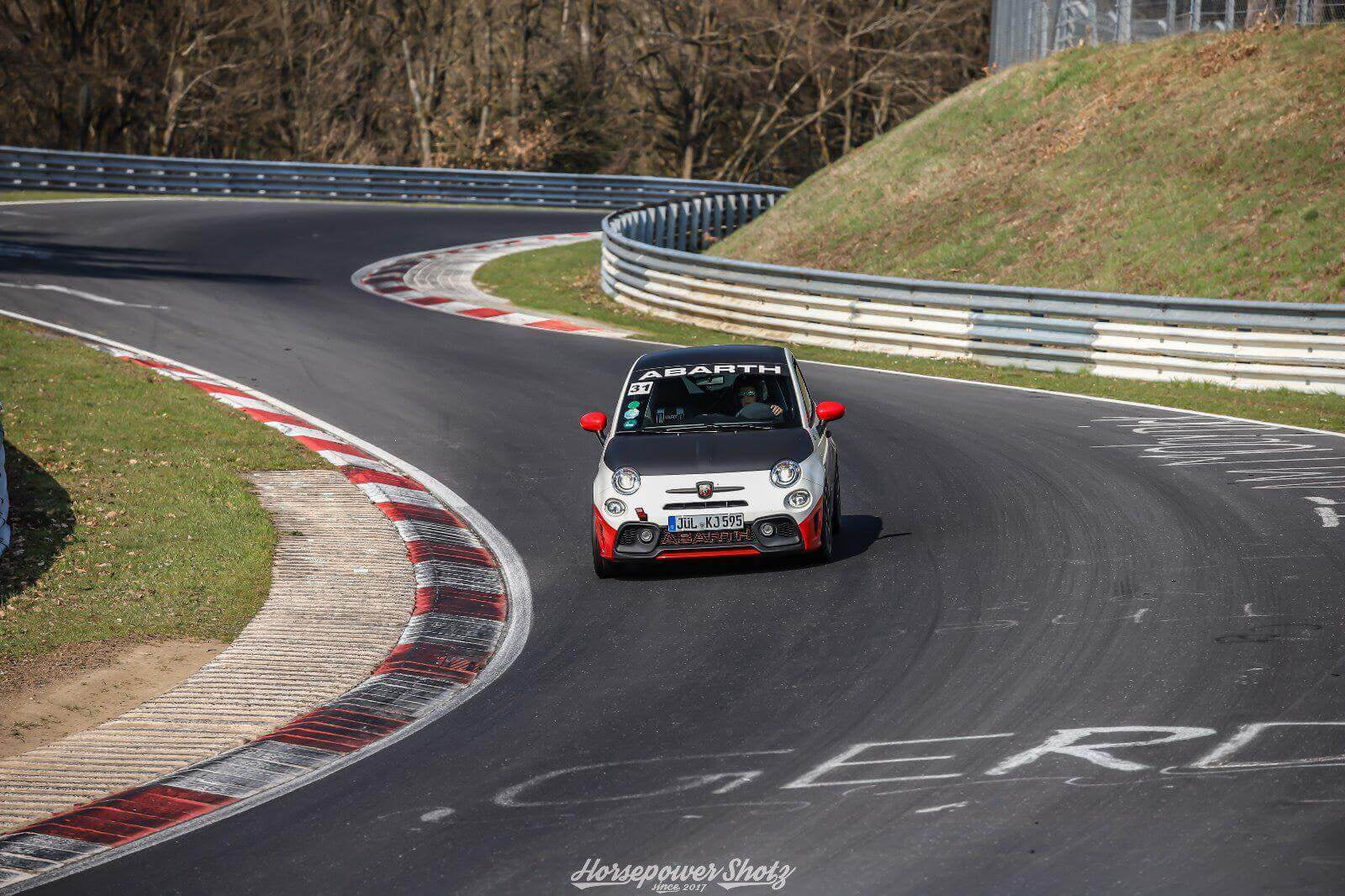

Trackdays are held regularly at many locations in Germany. If you want to learn to drift, or already know how, if you find the abrasion of rubber fragrant, if you want to let out a little adrenaline, this is the place for you.
Important tuning fairs
The tuning community in Germany is growing, the number of visitors to tuning fairs is increasing. At the big shows, such as the Essen Motor Show, it is not only spectacular tuning cars that attract an audience from Germany and abroad. Racing teams and prominent drivers from various motorsport series also present themselves to the public.

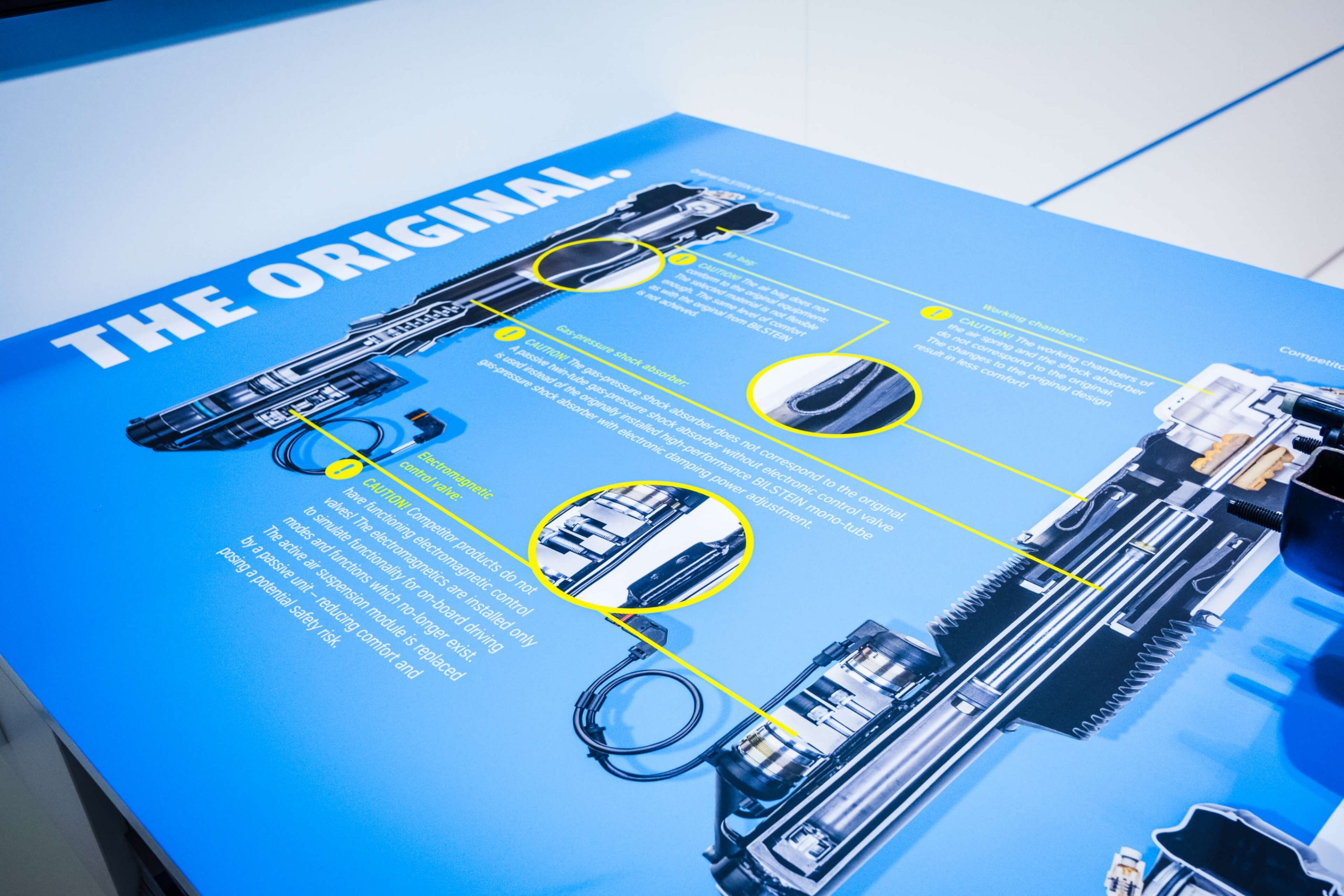
The same applies to Tuning World Bodensee, the second flagship of the German scene. This tuning event has made a name for itself with, among other things, a wide-ranging supporting programme and diverse opportunities to get involved.
Both fairs are also important meeting places for the racing and drifting scene. But it can also be done without celebrities and on a smaller scale. This is proven by the many self-organised tuning meetings in Germany.
Tuning meet-ups: Real tuning cars from the community
Meet and Greet! Tuning meet-ups are above all about getting together within the scene. While the big trade fairs are largely dominated by car manufacturers and tuning companies, the community gets together at the tuning meet-ups. If you are a tuner yourself, almost all meetings and some larger events offer you the opportunity to present your own car on the podium and track.
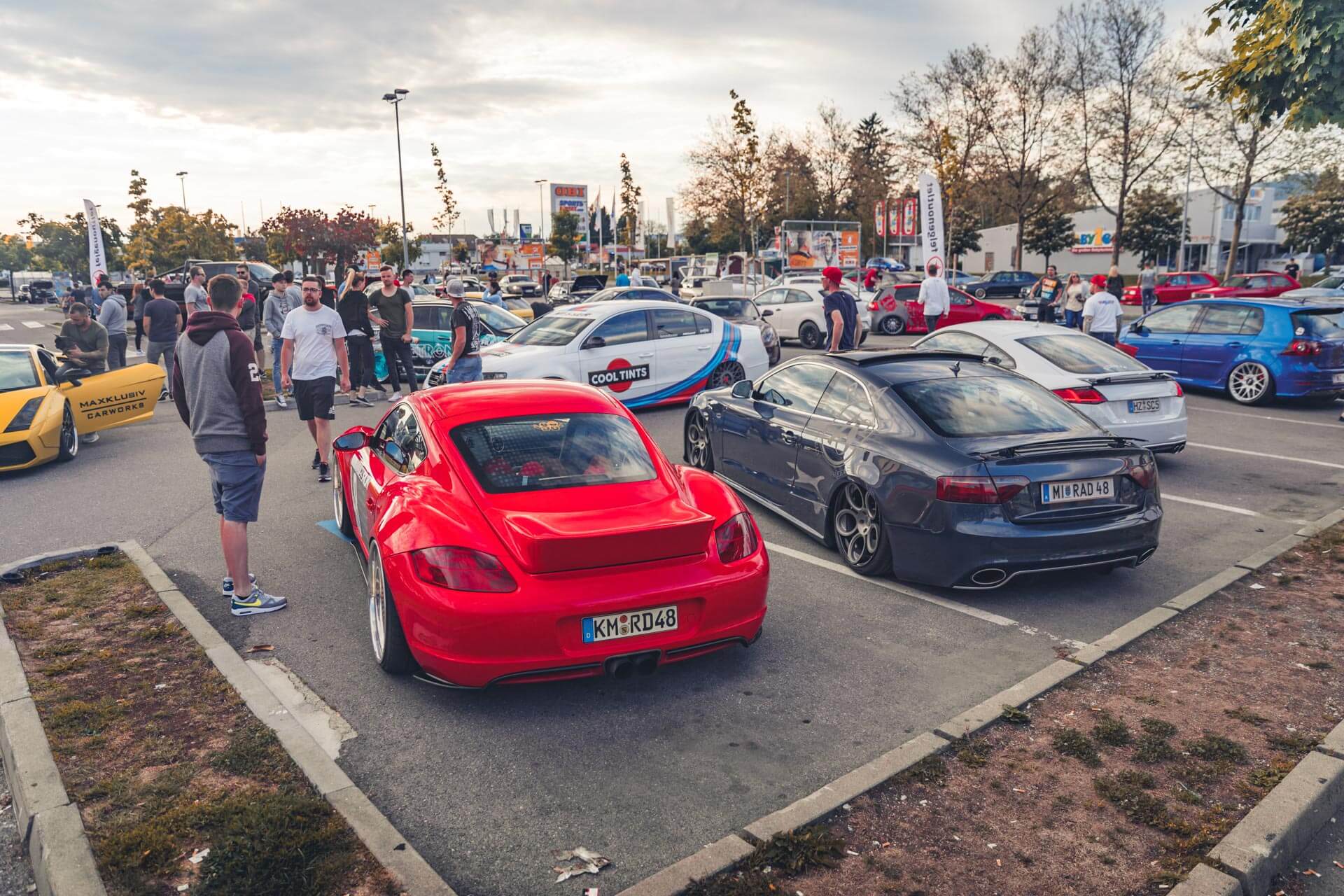
The spectrum of tuning cars ranges from meet-ups for old or young timers, to the small car of a certain brand, to the heavy 1000 hp bolides. The meetings reflect the diversity of the community. Go there and be amazed!
Frequently asked questions about car tuning
How much does car tuning cost?
Clearly, the sky’s the limit when it comes to tuning costs. Last year, a Pagani Zonda HP Barchetta was considered the most expensive car in the world. Bargain price: 20 million euros. There have also been gold-plated and gem-studded cars.
But for a start, a fine foil will do. And it only costs a few euros, depending on the motif and size. Once they have made a start, many newcomers to tuning become addicted. Fortunately, this fate does not have to lead to ruin. If, after the stylish film, exterior mirrors or lighting, for example, are added to the tuning range, even these costs are still manageable.
But it’s also clear that it will be more expensive if you hire a specialist workshop. What many people don’t realise is that tuning measures have an influence on other components, so one tuning measure often requires a second one. A chip tuning, for example, usually entails the installation of a new air filter. That’s why you should consult several experts and get different offers before taking your car to the tuning workshop.
In addition to the pure tuning costs, there are often legal obligations that can have a negative effect on your bank account. You should keep an eye on fees for expert reports and official registrations. For example, if you need an individual approval in Germany from the TÜV for rims without a general operating permit, you certainly won’t get away with a two-digit amount.
People who want to save money tend to do too much work themselves. But this can turn out to be a boomerang if, for example, the freshly fitted suspension rattles on the maiden voyage. The general rule is: the workshop is responsible for safety-relevant measures. You should have enough money for the tuning hobby.
Is tuning illegal?
Car tuning is not illegal in principle. However, depending on the country you live in some conversions can be illegal as soon as you dare to use them on public roads. This is because Road Traffic regulations may require that certain equipment on the vehicle may only be used in an officially approved design. This usually concerns safety-relevant parts such as tyres, brakes, the engine and the exhaust system.
An example from Germany: If an ABE (General Operating Permit) exists for the installed parts, the installation is initially unobjectionable. However, the original ABE must be carried in the vehicle. But even with an ABE you are not completely on the safe side. If you combine different parts, each with an ABE, in such a way that they influence each other, you need an individual approval from the TÜV.
If you disregard such requirements, you are living dangerously. The car loses its operating licence and thus also its insurance cover. Anyone who causes an accident uninsured is accused of intent by courts and insurance companies.
Can I tune my car myself?
Of course you are allowed to tune your car yourself – provided, of course, that you are really tuning your own car and not your neighbour’s vehicle. But to make sure that you are really tuning within the legal framework, you should always let professionals do the work as soon as safety-relevant parts come into play.
It is not only the experience of the professionals that pays off with optimal installation, but also their knowledge of legal grey areas. Because every installation must be carefully checked and carried out. In case of installation errors, which even advanced hobby tuners can hardly foresee, the general operating licence may expire. And with that, you quickly find yourself on the edge of legality.
Of course, this only applies if you take your tuned car onto public roads. These rules do not apply on private property or at some track days.
Is there training to become a tuner? Where can I learn tuning?
There is no predefined training path to become a car tuner. However, you can often find the path via training as a motor vehicle mechatronics technician. Additional courses such as car restorer, paint technician or car wrapping are also helpful.
Since car tuning is a widespread hobby, many young people have already gained some experience in the family or in the tuning community before they apply. You can practice the profession in workshops, at car suppliers and manufacturers, and at tuning companies.
Initiative and creativity are welcome in the scene – and conducive to a career. Many passionate tuners have turned their hobby into a profession. Uwe Gemaballa, for example, began installing stereo systems in cars in 1981. Today – more than a decade after his death – the Gemballa company is still considered one of the most important tuning companies in Germany.
You’re not just looking for a job, but a vocation? You want to make the everyday life of our customers and colleagues better every day? We offer you jobs in dozens of areas – from the development and construction of suspensions to IT, controlling or marketing …
Discover your vocationCan you buy ready tuned cars?
Some car manufacturers, such as Daimler, offer factory tuning. This variant is usually more expensive than do-it-yourself. The advantage: factory-tuned cars are perfectly crafted, roadworthy, and as the owner you are on the safe side legally.
Large tuning companies have also long since discovered this business for themselves, for example Brabus, ABT, Alpina, Hamann or MTM. They specialise in tuning certain brands and also sell completely tuned vehicles.
Tuning enthusiasts can get their money’s worth on the second-hand market. The relevant Internet portals such as AutoScout24 and mobile.de offer a wide range of vehicles. Platforms such as Racemarket.net specialise in tracktools.
If you value personal contact and want to take a test drive right away, then one of the many tuning meetings is the best place to be. However, not every event also offers a second-hand market.
Where can I get my car tuned?
Contractual, independent or specialized car tuning workshops can be used for car tuning. Authorized workshops often only use original accessories. Independent workshops are not bound by the choice of parts. At car tuning workshops specializing in certain brands, you will find a wider selection and greater expertise. You will also find over 500 partner workshops in the BILSTEIN workshop search.
The best way to find a good tuning workshop is through recommendations from the scene. Make sure that the workshop discusses with you exactly what work they will be doing on your car. Good workshops will provide you with a test report and parts certificates after the work has been completed.


